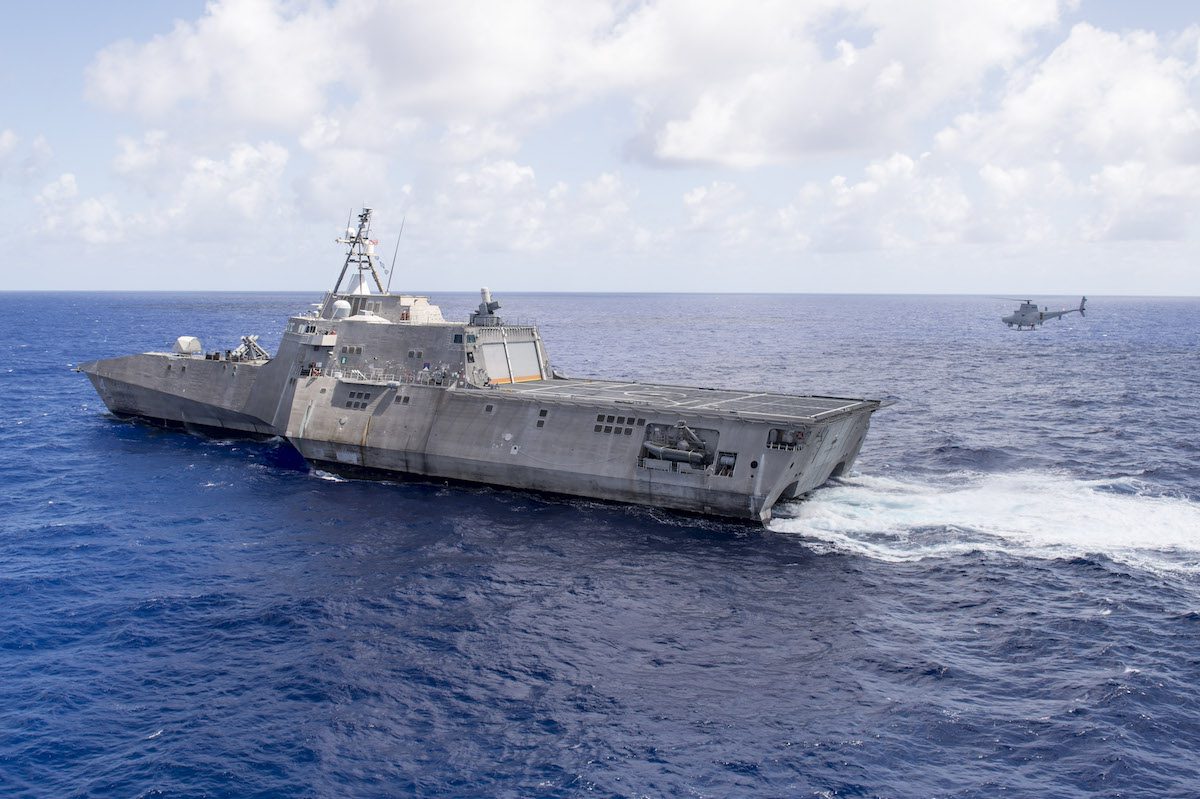India’s Oil Demand Drives CMB Tech Fleet Diversification
By Dimitri Rhodes Nov 7 (Reuters) – Belgian oil tanker company CMB Tech says it will focus on the fast growing market in India as it reported third quarter results...


Littoral combat ship USS Coronado (LCS 4). U.S. Navy Photo
By Tony Capaccio
(Bloomberg) — The U.S. Navy’s Littoral Combat Ship program “stands at a crossroads,” as the service prepares to ask Congress to authorize spending as much as $14 billion to buy more of the troubled vessels, congressional auditors say.
Congress must decide “whether a ship that costs twice as much yet delivers less capability than planned warrants an additional investment,” the U.S. Government Accountability Office said in a report issued Thursday as the Senate Armed Services Committee met to review the $29 billion program.
The Navy plans to ask early next year for authorization to build the final 12 of 40 ships as well as equipment for missions. Those final ships are described as “frigates” that will be better-armed than the existing designs.


The Navy will seek the funding for fiscal years 2017 and 2018 “despite significant unknowns about the cost, schedule, and capability of the vessel,” the GAO said in its report to the committee headed by Senator John McCain, a longtime critic of the program. The last two defense secretaries have cut back plans for the ship, built in two versions by Lockheed Martin Corp. and Austal Ltd.
“The taxpayers have paid for — and are still paying for — 26 ships that have demonstrated next-to-no combat capability,” McCain, an Arizona Republican, said in opening Thursday’s hearing. Calling it an “all too common example of defense acquisition gone awry,” McCain said Congress has continued to fund the ships even though lawmakers have raised questions about it since the first funds were sought in 2002.
But the Littoral Combat Ship, designed for operations in shallow coastal waters, may gain a champion in President-elect Donald Trump, who has vowed to increase the Navy’s fleet to 350 ships from 272 today.
In addition, Senator Jeff Sessions of Alabama, an early Trump supporter who’s now his nominee for attorney general, has been a steadfast booster of the program. The Austal version is built in Mobile, Alabama. Lockheed builds the other model in Wisconsin.
“We can’t achieve anywhere near” the 350 Navy vessels Trump has promised unless the costs of Littoral Combat Ships are brought under control, McCain said in an interview after the hearing. “You can’t have costs double and redouble the way that has characterized the LCS. You can’t do it, and taxpayers won’t stand for it.”
The GAO assessment, a distillation of 10 years of reports and current information, offers a cautionary tale on depending too heavily on the LCS to boost the fleet. The Navy’s buying approach “raises concerns about over-committing to the future acquisition of ships for which significant cost, schedule, and technical uncertainty remains,” Paul Francis, the GAO’s managing director for acquisition and sourcing management, wrote in the report.
Twenty-six ships of what’s now a 28-vessel program of original Littoral Combat Ships are delivered or on contract; the last two are being authorized this year. Over a decade, the vessels went from an estimated cost of $220 million per ship to an average currently of $478 million apiece.
Sean Stackley, the Navy’s acquisitions chief, said in testimony to the committee that the Littoral Combat Ship “is of critical importance to the Navy.” He said it now has “a stable design and a mature production line” that’s allowed the service “to make significant progress in completing both ship and mission-package testing requirements.”
Acknowledging the history of cost increases and schedule delays, Stackley said “each of the eight LCS that are in service was delivered at a successively lower cost, and with improved reliability as compared to their predecessors.”
In the fiscal 2018 budget, Congress will be asked to authorize a 12-ship “block buy” of modified “frigates” intended to round out the program at 40 vessels. “Authorizing the block buy strategy for the frigate appears premature,” Francis of the GAO wrote.
The Navy has “deviated from traditional shipbuilding acquisition in hopes of rapidly delivering ships to the fleet” with the consequences “well-known today — costs to construct the ships have more than doubled from initial expectations, with promised levels of capability unfulfilled and deliveries significantly delayed,” Francis said.
McCain said in the interview that he expects the committee to examine whether the additional 12 frigates are needed. GAO “has made a strong case” against the block buy, “and I understand that. Except for mature systems, I have opposed block buys as well.”
© 2016 Bloomberg L.P
Join the gCaptain Club for curated content, insider opinions, and vibrant community discussions.


Join the 109,413 members that receive our newsletter.
Have a news tip? Let us know.







Maritime and offshore news trusted by our 109,413 members delivered daily straight to your inbox.



Essential news coupled with the finest maritime content sourced from across the globe.
Sign Up